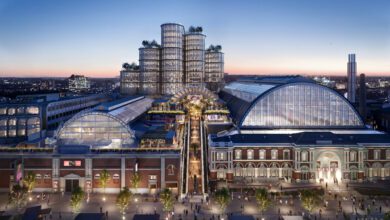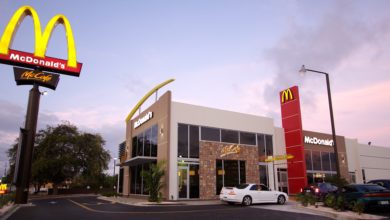
Register to get 1 free article
Reveal the article below by registering for our email newsletter.
Want unlimited access? View Plans
Already have an account? Sign in
Do you think hospitality is one of the sectors that could potentially benefit from implementing AIs?
Yes, very much so. Robotics is one area, such as the delivery tray bots that we have, but they could also be used in the areas of for example guest greeting or taking reservations, or taking specifics around reservations, like if a customer says ‘I’d like to book a table by the window’ and having an AI understand the intent and be able to then figure out which table must be reserved.
But it really depends on the business. Some people will target the experience of in person and human interaction and personalised services for their customers. Whereas another brand might focus more on productivity and speed, or convenience. So I think that different companies will lean into automation at a different level, depending on what their goals are.
Can you tell me a bit about the history of Keenbots?
Keenbots is one of our investments at SoftBank and through that company, we have a range of different types of tray robotics. There are mainly two types: one open with trays and then the other one that has doors and can be closed. The open ones can be used at restaurants and catering events and they’re used primarily for two reasons. The first use is for when a waiter clears a table and puts the dishes on the bot to send them back to the kitchen.
The second use is for the delivery of food to the table area. And this is where the restaurant experience comes into play. Some restaurants will make the robot come near the table. And then the waiter can just take the food and serve it to the clients. Or some places will opt for the fully automated service and have the robot go right up to the table whether the guest is expected to help themselves by taking the food off the tray.
The bot with the doors that can be closed can instead be used when the robot is not in a supervised state. So for example, hotels and room service. We have one, called W3, which is creating a lot of excitement in the hotel industry for helping with the peak periods. Once the food has been put inside, W3 is able to go to the elevator, call it down, go to the correct floor and then it makes a phone call to the room to let the guests know that their food has arrived outside.
What are the benefits of using tray delivery robots?
One of the biggest benefits is that it improves customers’ experience. It decreases the time one waiter spends going back and forth from the kitchen with dishes, and they can instead spend more time engaging with the customer and making sure they’re having a pleasant experience. So as a result, customer service improves. The time spent with a customer has doubled. Whereas sometimes, if you look around in a restaurant and you don’t see the waiter coming your way, it becomes frustrating and you might even decide to leave.
Does this mean that waiters and waitresses will be substituted by robots in the future?
I just think that the role of the waiter will change, and the focus will be less on going backwards and forwards to the kitchen, and more on the table area. There could be a case that, if for example a restaurant had five waiters, when it introduces robotics, they might only need three people. But the people who are there can sell more and can create a better experience for the customers. So I like to think of it not as job loss, but more as removing the worst parts of a job and helping them be better and provide more valuable service.
What are the potential limitations of using these tray delivery bots?
I think there could be limitations for those restaurants that have, for example, steps or tables and chairs so close together, that even the waiters and waitresses kind of weave in and out so robots could definitely not work. And then another factor is that waiters still need to get adjusted to using them. If you’re literally arriving on the first day, at peak hour, and you need to get started, you may not know how to engage with a robot straight away. People in hospitality need a little bit of familiarisation with how robots work and how to interact with them, although they’re still fairly easy to set up.
What other types of robots could be used in hospitality, apart from tray delivery ones?
SoftBank Robotics has also invested in a robot that’s quite well known. It’s called Pepper and it’s a humanoid type of robot. Its AI system is very sophisticated and we are currently using it at a restaurant in Tokyo. It welcomes the guests, it shows them their table and it can take orders. I think it’s still not quite ready for full production but I don’t think it will be long before it gets rolled out in other places.
Do you think that robots such as Keenbots are going to be the future of hospitality?
I think the choice for restauranteurs is there, the capability to do it is there and the cost makes it an economically persuasive case too. I think the question in places such as Japan for example, is no longer ‘should I have a robot’, but more ‘what’s the best way for me to implement a robot for my business’.
I think that in the next five to ten years we will see them in more than 50% of restaurants. Whether they will be in every restaurant or not is a matter of space and those limitations I’ve mentioned, but I think that almost everyone will be using them in some way.







